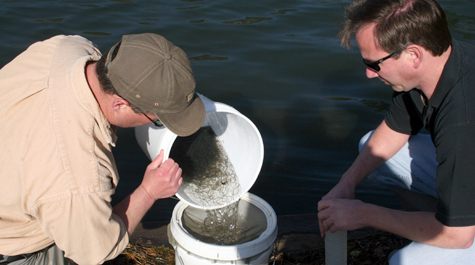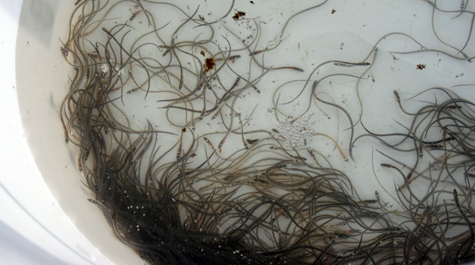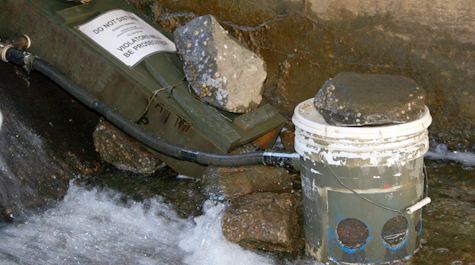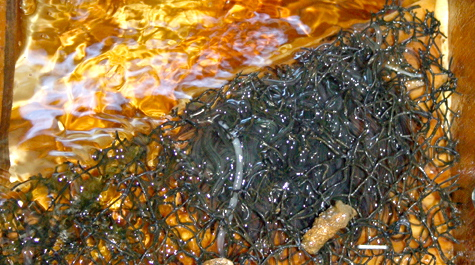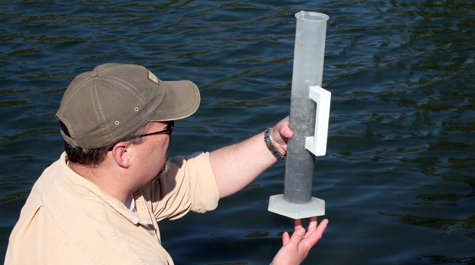American Eel Monitoring Program
American Eel (Anguilla rostrata) is a valuable commercial species along the Atlantic coast of North America from New Brunswick to Florida. In recent years, US coastal harvests have declined, with similar patterns occurring in the Canadian Maritime Provinces. Landings from Chesapeake Bay typically represent around 60% of the annual US commercial harvest.
In light of this decline, the Atlantic States Marine Fisheries Commission (ASMFC) in 1999 adopted an Interstate Fishery Management Plan (pdf) for the species. The plan focuses on increasing coastal states' efforts to collect American Eel data through both fishery-dependent and fishery-independent studies.
The American Eel Monitoring Program at the Virginia Institute of Marine Science (VIMS) is Virginia's contribution to the fishery-independent component of the ASMFC's Interstate Fishery Management Plan. Each spring since 2000, VIMS researchers have been monitoring the migration of young-of-year American Eels into Virginia's estuaries and freshwater tributaries, partnering with fisheries teams in other East Coast states to provide the first comprehensive picture of the eels' coast-wide population. Understanding the size and dynamics of the species' population is key to its effective management and protection.
Program Objectives
- Monitor the migration of glass eels into Virginia's Chesapeake Bay tributaries to determine how it varies in time and space.
- Examine the environmental factors that may influence young-of-year eel recruitment.
- Collect basic biological information on recruiting eels, including length, weight, and pigment stage.


